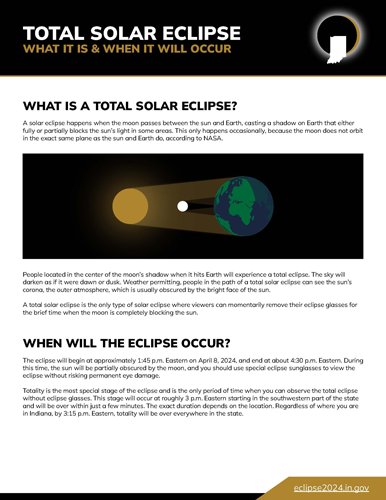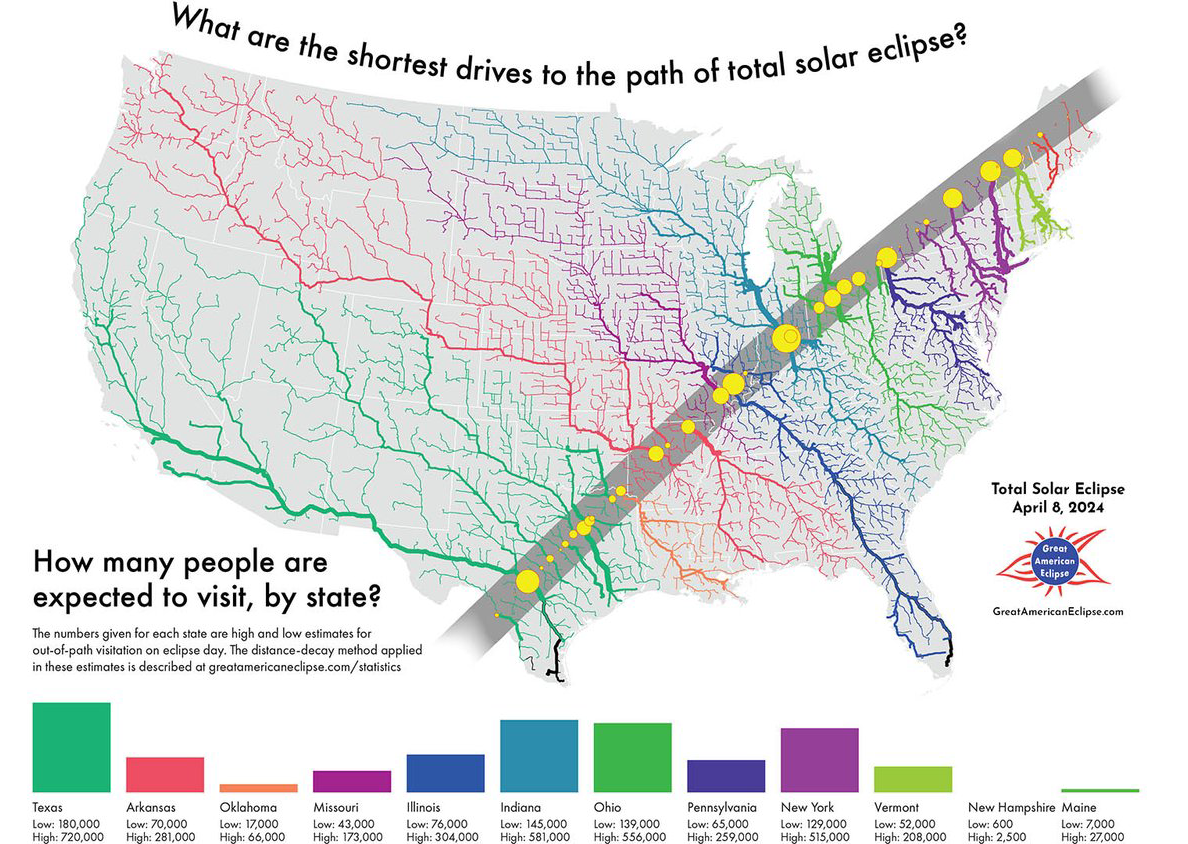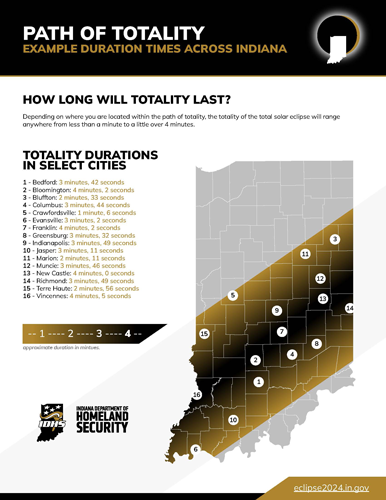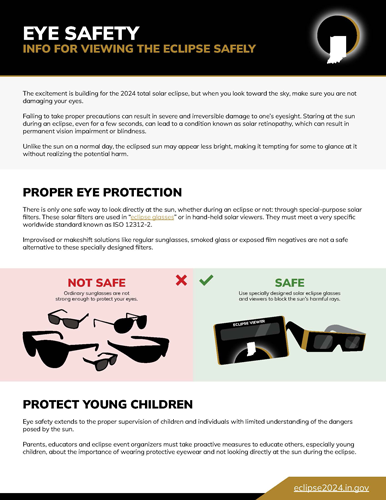The 2024 total solar eclipse will be viewable from Indiana on April 8, 2024. It will be the last total solar eclipse visible from the contiguous United States until 2044, so plan ahead so you do not miss the opportunity.
- How a Solar Eclipse Works
How a Solar Eclipse Works
A solar eclipse happens when, at just the right moment, the moon passes between the sun and earth. Sometimes it only blocks part of the sun's light (partial solar eclipse), but sometimes it blocks all of the light (total solar eclipse). The moon casts a shadow on a narrow part of the earth, and this shadow trail is what is called the path of totality. Within that path, the moon blocks the sun completely for up to a few minutes.
- Find a Place to View From and Get There Early
Find a Place to Watch From and Get There Early
The total solar eclipse will be highly publicized in the days leading up to April 8, 2024. Because of the rarity of total solar eclipses, many thousands of people will be traveling to Indiana or from elsewhere within the state so that they can be in the path of totality. In fact, it is estimated Indiana may see as many as half a million out-of-state visitors for the eclipse, boosting the state's population by nearly 10%.
This will lead to unusually high levels of traffic on roadways. As seen around the country during the Great American Eclipse in 2017, traffic jams will occur, especially after the eclipse is over and people begin to travel home. Expect crowds and traffic levels to be heavy, even in rural areas.
To avoid being on the roads at these times, plan ahead:
- Look up a location nearby that is in the path of totality.
- Make sure that you find a spot with a good view of the sky — not obscured by trees or other tall objects.
- Be sure that you have permission to watch from a location: Many places are hosting events where the public can watch.
- Make arrangements to arrive there before peak travel occurs.
- Time It Right
Time It Right
The eclipse will begin at approximately 1:45 p.m. Eastern on April 8, 2024, and end at about 4:30 p.m. Eastern. During this time, the sun will be partially obscured by the moon, and you should use special eclipse sunglasses to view the eclipse without risking permanent eye damage.
Totality is the most special stage of the eclipse and is the only period of time when you can observe the total eclipse without eclipse glasses. This stage will begin at roughly 3 p.m. Eastern in the southwestern part of the state and will be over within just a few minutes. The exact duration depends on the location. Regardless of where you are in Indiana, by 3:15 p.m. Eastern, totality will be finished everywhere in the state. Note: Portions of southwestern Indiana are in the Central time zone, so totality will be at approximately 2 p.m. local time (Central time) in those areas.
- Partial eclipse: Approximately 1:45 to 3 p.m. Eastern
- Total solar eclipse: Approximately 3 to 3:15 p.m. Eastern (totality is a maximum of about 4 minutes, duration depends on location)
- Partial eclipse: Approximately 3:15 to 4:30 p.m. Eastern
- Use Eye Protection
Use Eye Protection
During the few seconds or minutes when the moon is completely blocking the sun (totality), viewers can safely look toward the sun without eye protection. The rest of the eclipse, before and after totality, you will need special sunglasses when you look at the sun. Order them now from a reputable vendor so that you and those you are with will be ready in advance. Sunglasses may be hard to acquire close to the event.
- Stay Around


Stay Around
The time of totality will be over by 3:15 p.m. Eastern in Indiana, and the partial eclipse will be completely over by 4:30 p.m. Eastern. Plan ahead to stay at the location you viewed the eclipse for a while to allow for peak traffic to pass. Consider staying the night there instead of leaving immediately after the eclipse. Thousands of people will be driving after the eclipse is over in a special type of "rush hour," including in areas that are not used to having traffic jams. Avoid the traffic and stay around a while. VisitIndiana.com has a great list of suggested places to stay in Indiana.



